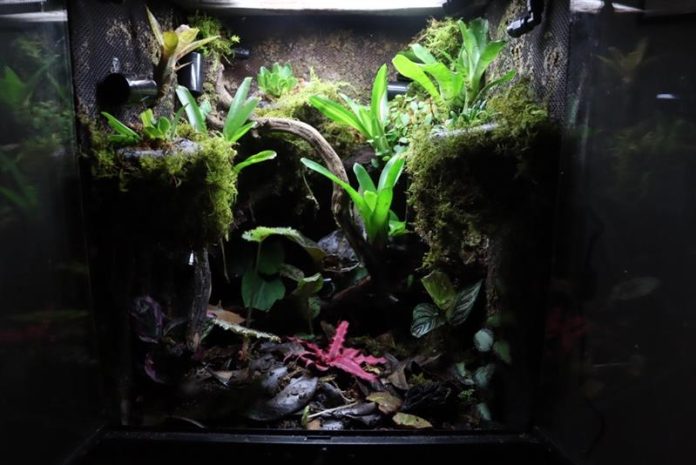What’s a Terrarium?
“It’s an ecological habitat you set up for pets; people have been doing it for a long, long time. It’s been pioneered as a hobby and people don’t even have to have any pets. It’s just something where you can keep plants and let them grow like little habitat[s] of your own.”
When did you first start building the habitats? When did you start pursuing this hobby?
“I’ve been at it for a long time now. First grade was when I wasn’t keeping them, but when I started to get inspired from, a youth club, youth pastored club, and we were talking about ants and that really excited me, just kind of the topic of animals. It led me on a journey, just trying to figure out how to keep these amazing creatures and what I could do.
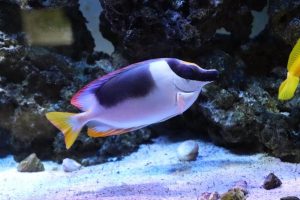
So in terms of whenever I built my first or had my first tank, I had my first reef tank when I was, I want to say 12 years old with my dad. It’s a 125-gallon reef tank that’s in my living room right now, with about currently 700 many different coral species, and I’m planning on adding more and more.
I’ve been doing this for at least four or five years now. The first real tank started about four years ago.”
Could you see yourself pursuing a degree working with animals?
“I’ve been considering it for a while and thinking about what I want to do, and I really abide by the motto that you’ll never work a day in your life if you enjoy what you do. I’ve been looking at things like environmental science or zoology, just trying to find something like research programs or someplace where I could continue to be around animals.
Maybe like running around in the port forests of Peru or diving in the Great Barrier Reef, something with conservation work.”
Do you plan on stopping your terrariums after high school?
“No. And my mom and dad gave me a hard time actually because I want to take them to college with me. So we’ll see how that pans out.”
What’s your favorite animal you have in your terrarium currently?
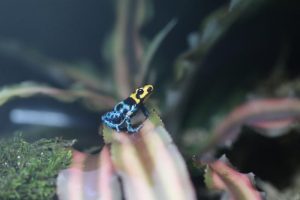 “I’ve only ever kept two types of bird frogs, and they’re both from the same species. What I have currently is known as the blessed poison dart frog, and of those, I’ve kept two – two of the subspecies ranitomeya benedicata pampa hermosa (red seen below), and ranitomeya benedicata pampa yellow heads (yellow seen above). They’re gorgeous.”
“I’ve only ever kept two types of bird frogs, and they’re both from the same species. What I have currently is known as the blessed poison dart frog, and of those, I’ve kept two – two of the subspecies ranitomeya benedicata pampa hermosa (red seen below), and ranitomeya benedicata pampa yellow heads (yellow seen above). They’re gorgeous.”
How do you import these dart frogs? Do you go through a supplier?
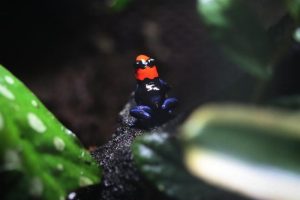
“So I actually bought mine from a guy in New Jersey. I’ve been talking to him for a while. He has a collection of over a hundred plus frogs, which he breeds as a side thing.
I have some friends who have 70 plus animals. It’s really something, if you get the bug for it, you start to become really invested and it becomes something that’s really, really fun. So I bought mine from a private collector up in New Jersey, and then it just grew from there.”
What kind of tanks do you use as your terrariums?
“It’s essentially a glass box. You can have it multiple different ways. My two terrariums right now are both made out of glass with plastic and silicone.
That’s how they’ve been built together. You can make these yourself but it’s difficult. Reef tanks can be made with glass or acrylic. Acrylic scratches easier and it doesn’t have a nice look; glass doesn’t scratch. There are pros, like acrylics being more strong.”
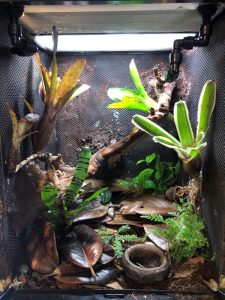
How have you gathered the majority of your information for supporting your hobby?
“One of the hardest parts about this is that trying to find reliable, factual information is incredibly difficult. Finding those people who have been in the hobby for a long time, and finding [informational] articles is a struggle. At first, it gets quite overwhelming to figure it out online. So one of the things that’s helpful to newbies – which goes for me as well – are forums. So for example, Reef to Reef or Nano Reef, those are two forums I use to look for inspiration. Mainly I just use them to look at build guides and stuff like that for how people have created their thanks.
That’s a fantastic resource to go to if you’re intrigued and wish to start things up. So really, it’s just doing your own research of trial and error, figuring out what you like, what you don’t, and finding the right people. Honestly, it’s been a journey trying to figure out who I talk to, figuring out information, not talking to friends, meeting people; it’s really just becoming invested and, slowly but surely, becoming more informed about yourself.”
If a student wanted to start up their own terrarium, what’s one piece of advice you would give them?
It’s about figuring out what you like, taking it slow and not trying to rush the process; like whenever you’re building something – figuring out, does this look good here, would this look aesthetically pleasing, trying to plan ahead. It’s kind of hard because really you can’t see in that moment, but having a general idea of what you want is a good start.”
How have your parents supported you throughout this hobby?
“I’ve been building reefs or I’ve been just reef keeping with my father for about four years now, and he lets me handle it. I take care of a lot of the stuff, and he invests in the projects that I do.
It’s been up to me to figure out how to do these things. I do my own research; that’s how I was able to do these things in the first place. I’ve asked my parents to do these things by proving to them that I’m adept and capable of doing it. Honestly, they both couldn’t be more happy with results.
The tanks are beautiful and the reefs are coming along nicely – it’s all clicking. If you have parents who are unsure about this, or just apprehensive and hesitant, one of the things I would tell you is show them how cool terrariums can be and get them invested in it.
People are more likely to do something if you can get them invested and if they’re likely to make it a personal thing. And it’s a great hobby: it’s a great something to do with them to get them excited. Do it with your brother and sister, mother and father, and just explore and have fun.”
Casimir Kenjarski’s hobby of reef keeping and terrarium building has allowed him to find a passion for animals and nature. By discovering a passion, he has found something he enjoys to do on the regular. Learning about building habitats has allowed him to learn a multitude of skills, such as the design process that he will continue to use throughout adulthood.
Stay tuned to the RoundUp for more information regarding student life!


